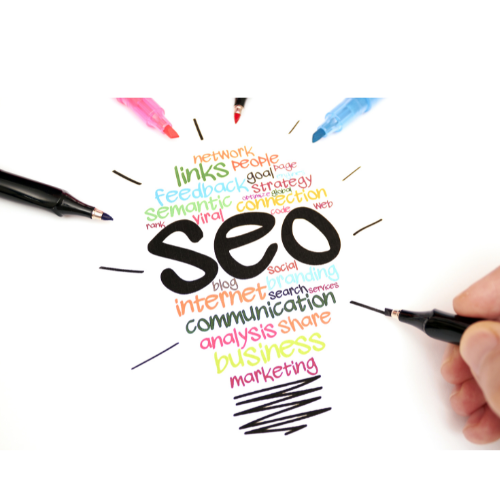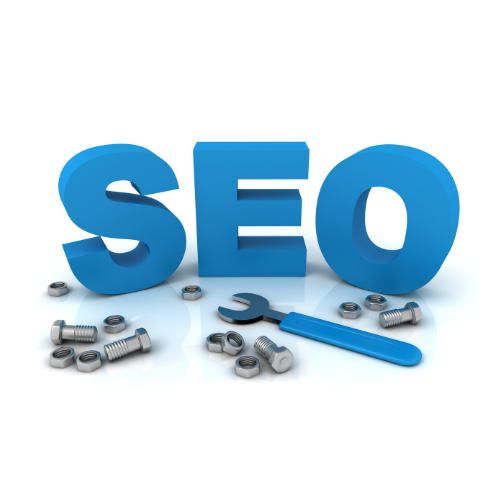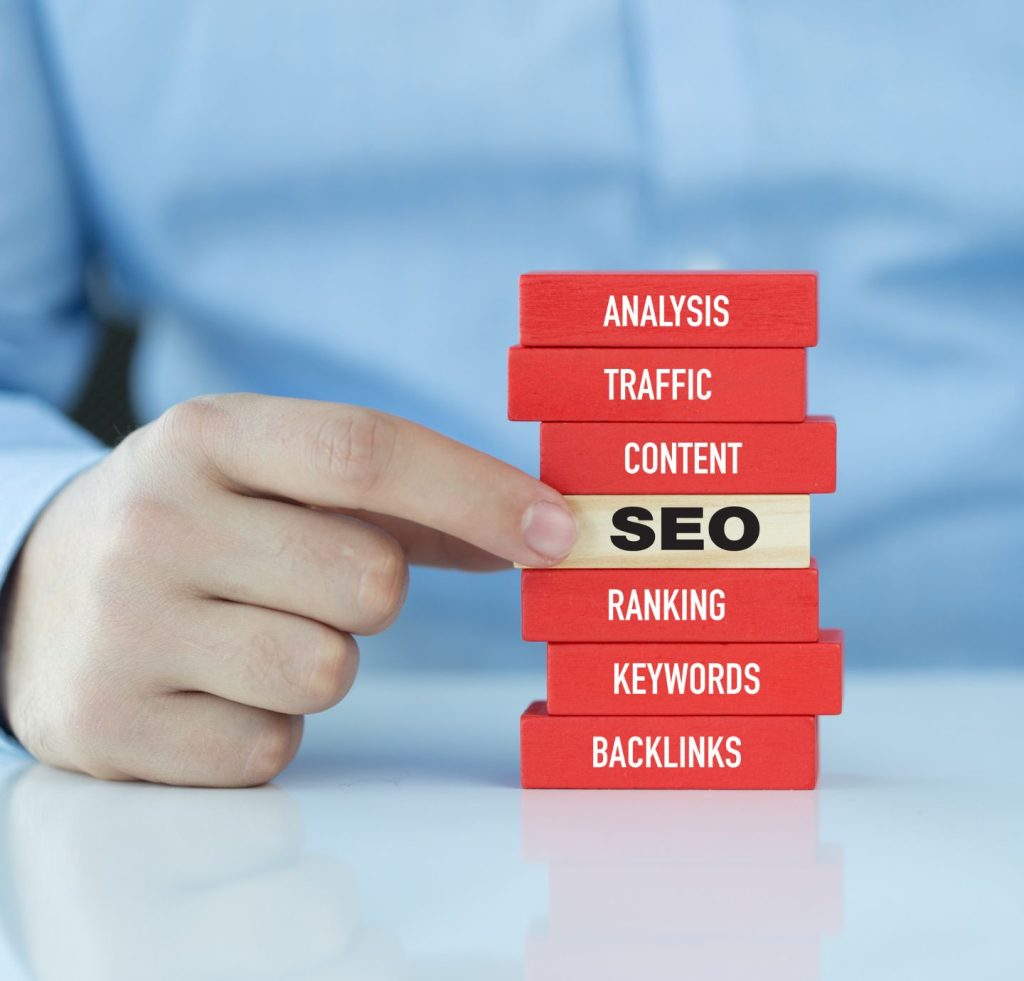Search engine optimization (SEO) is the process of improving the ranking of a website on search engines like Google. When a website ranks higher on search engines, it is more likely to receive organic traffic from users searching for its products or services.
Here are a few ways in which SEO can help scale a business:

- Improved visibility: A higher ranking on search engines means that more people are likely to see the website, which can increase traffic and potential customers.
- Increased credibility: A website that ranks well on search engines are seen as more credible and trustworthy by users. This can increase conversions, as users are more likely to purchase from a reputable source.
- Better user experience: SEO involves optimizing the website for users and search engines. This means that the website will be easier to navigate and more user-friendly, which can increase traffic and conversions.
- Cost-effective marketing: SEO is a cost-effective marketing strategy, as it targets users who are already interested in the website’s products or services. This means the business can attract qualified leads at a lower cost than other marketing strategies.
Several technical aspects need to be considered to improve the ranking of a website on search engines. These include:

- On-page optimization: This involves optimizing the website’s content and HTML source code to make it more relevant and appealing to search engines. This includes optimizing the title tags, meta descriptions, and headings to include relevant keywords.
- Off-page optimization: This involves building links from other websites to the website. These links act as “votes of confidence” for the website, signalling to search engines that the website is trustworthy and authoritative.
- Technical SEO: This involves optimizing the technical aspects of the website to ensure that it is easily crawlable and indexable by search engines. This includes optimizing the website’s loading speed, ensuring it is mobile-friendly, and fixing any broken links or errors.
ON-PAGE OPTIMIZATION

On-page optimization is optimizing individual web pages to rank higher and earn more relevant traffic in search engines. This involves optimizing a page’s content and HTML source code to make it more relevant and valuable to users and search engines. On-page optimization is an essential aspect of search engine optimization (SEO) because it helps search engines understand the content and context of a web page and determine its relevance and value to users.
Here are some key elements of on-page optimization:
- Title tags: The title tag is an HTML element that specifies the title of a web page. It appears in the title bar of a web browser and is also used by search engines as the title of a search result. It should be concise and contain relevant keywords to optimize the title tag.
- Meta tags: Meta tags are HTML elements that provide metadata about a web page. This metadata can include a description of the page’s content, keywords related to the page, and other information that can help search engines understand the page’s context. To optimize meta tags, they should be concise and contain relevant keywords.
- Headings: Headings are used to structuring a web page’s content and make it easier to read. Search engines also use them to understand the hierarchy and structure of a page’s content. To optimize headings, they should be used appropriately and contain relevant keywords.
- Content: The content of a web page should be valuable and relevant to users and contain relevant keywords. It should be well-written, easy to read, and structured appropriately, using headings and subheadings to optimize the content.
- Images: Images can be optimized by using appropriate file names and alt tags. Alt tags are used to describe the content of an image and should contain relevant keywords.
- Internal linking: Internal linking refers to linking other pages on the same website. This can help search engines understand the structure and hierarchy of a website and can also improve the user experience by making it easier for users to navigate the site.
- URL structure: The URL structure of a web page should be clear and descriptive and contain relevant keywords. This can help search engines understand the content of a page and can also improve the user experience by making it easier for users to understand what a page is about.
Optimizing these elements can improve a website’s ranking in search engine results and attract more relevant traffic. However, it’s important to note that on-page optimization is just one aspect of SEO and should be combined with off-page optimization, such as link building, to achieve the best results.
OFF-PAGE OPTIMIZATION

Off-page optimization refers to optimizing a website’s visibility and authority on the internet through activities outside of the website itself. These activities can include link building, social media marketing, and content marketing, among others. Off-page optimization aims to improve the visibility and ranking of a website in search engine results pages (SERPs) by increasing the number and quality of external links pointing to the website.
Here are some key elements of off-page optimization:
- Link building: Link building is the process of acquiring external links from other websites to your own. This can help improve the visibility and authority of a website in search engines because search engines view links as a vote of confidence in the quality and relevance of a website. Creating valuable, relevant content that other websites will want to link to is essential to build high-quality links.
- Social media marketing: Social media platforms can promote a website and its content and build relationships with potential customers. By creating and sharing valuable, relevant content on social media, a website can attract more visitors and improve its visibility in search engines.
- Content marketing: Content marketing involves creating and distributing valuable, relevant content to attract and retain a clearly defined audience. A website can improve its visibility and authority in search engines by creating valuable content that is widely shared and linked.
- Online directories and review sites: Submitting a website to online directories and review sites can help improve its visibility in search engines. These sites often have high authority, which can help improve the ranking of a website in search results.
- Influencer marketing: Influencer marketing involves partnering with influential people or organizations in a particular industry to promote a website or its content. This can help increase the visibility and credibility of a website in the eyes of potential customers.
Optimizing these elements can improve a website’s ranking in search engine results and attract more relevant traffic. However, it’s important to note that off-page optimization is just one aspect of SEO and should be combined with on-page optimization, such as optimizing the content and HTML source code of a website to achieve the best results.
TECHNICAL SEO

Technical SEO refers to optimizing a website’s technical aspects to improve its visibility and ranking in search engine results pages (SERPs). Technical SEO involves optimizing a website’s infrastructure, server setup, and code to ensure that it is crawlable, fast, and secure and to make it easier for search engines to understand and index its content.
Here are some key elements of technical SEO:
- Crawlability: Crawlability refers to the ability of search engines to access, crawl, and index a website’s pages. To improve crawlability, a website should have a clear and logical structure, use descriptive and relevant URLs, and have a sitemap that lists all of the website’s pages.
- Page speed: Page speed refers to the time it takes for a web page to load. Slow page speeds can negatively impact a website’s ranking in search results and user experience. To improve page speed, a website should minimize the size of its pages and resources, optimize images, and use caching to store frequently accessed content.
- Security: Ensuring a website’s security is essential for SEO and user trust. To improve security, a website should use secure connections (HTTPS) and regularly update its software and plugins to fix vulnerabilities.
- Mobile-friendliness: With the increasing use of mobile devices to access the internet, a website needs to be optimized for mobile. This includes having a responsive design that adjusts to different screen sizes and using mobile-friendly navigation and formatting.
- Structured data: Structured data is a standardized format for providing information about a webpage and its content. By using structured data, a website can provide search engines with more information about its content, which can help improve its visibility in search results.
Optimizing these elements can improve a website’s ranking in search engine results and attract more relevant traffic. However, it’s important to note that technical SEO is just one aspect of SEO and should be combined with on-page and off-page optimization to achieve the best results.



Leave a Reply